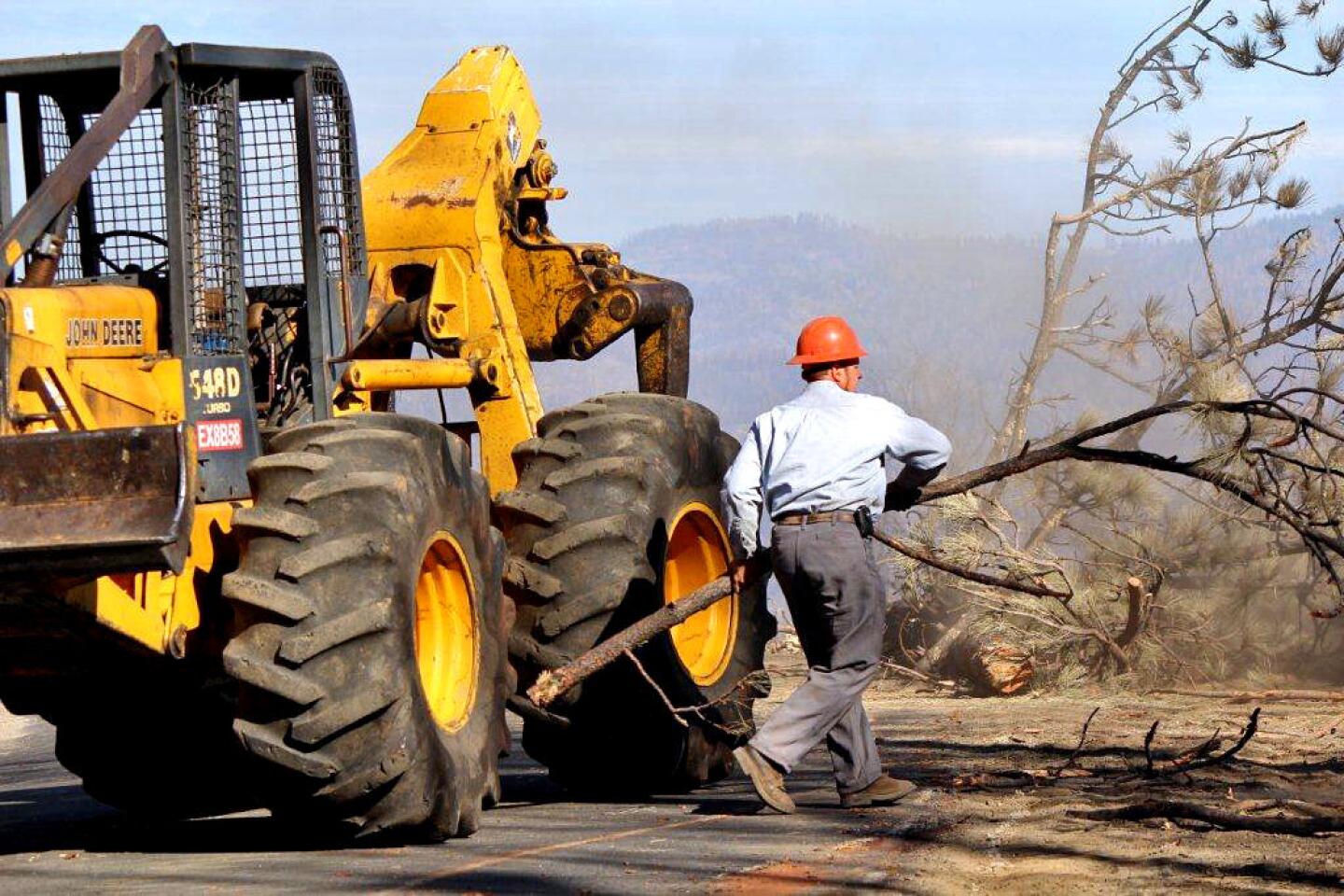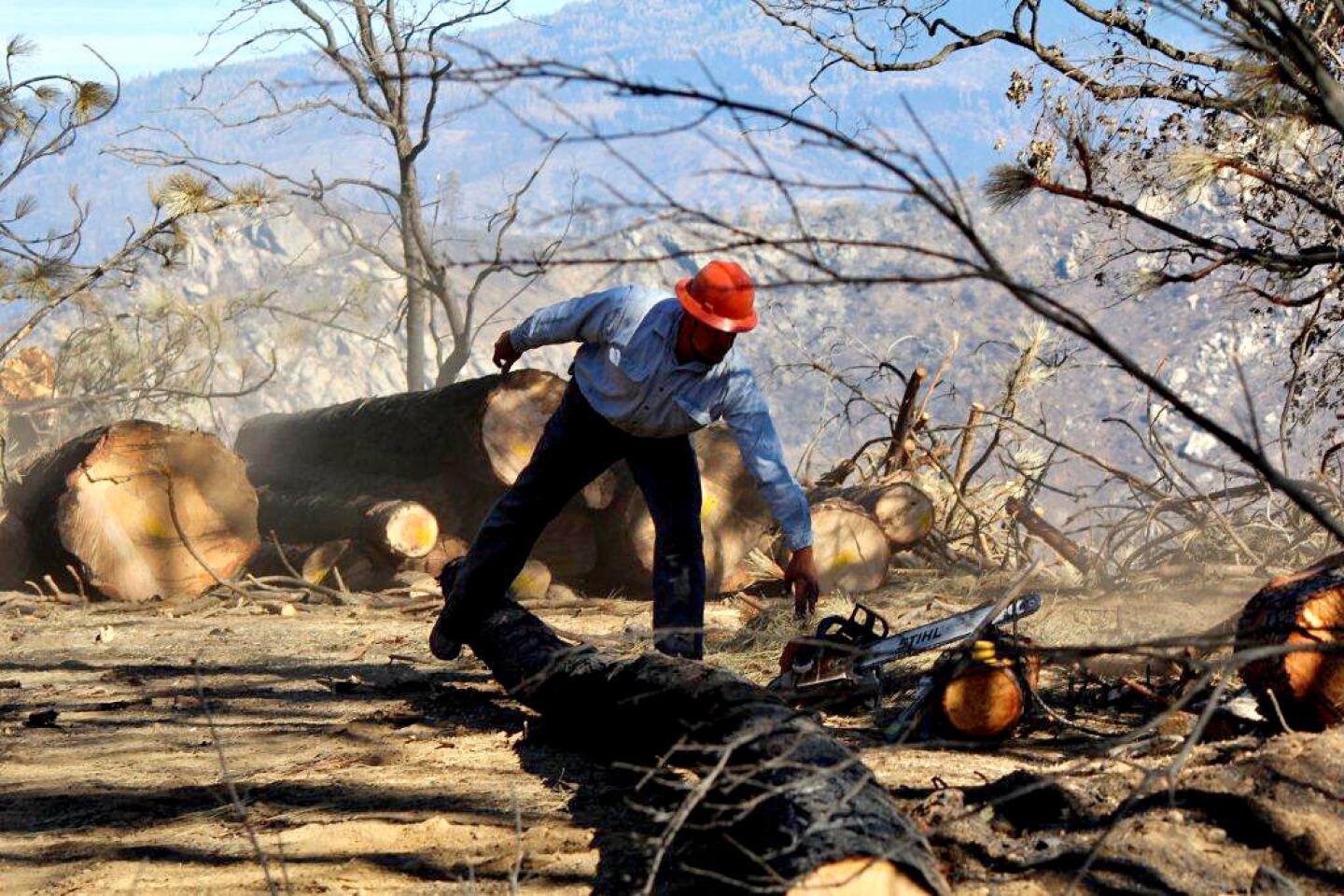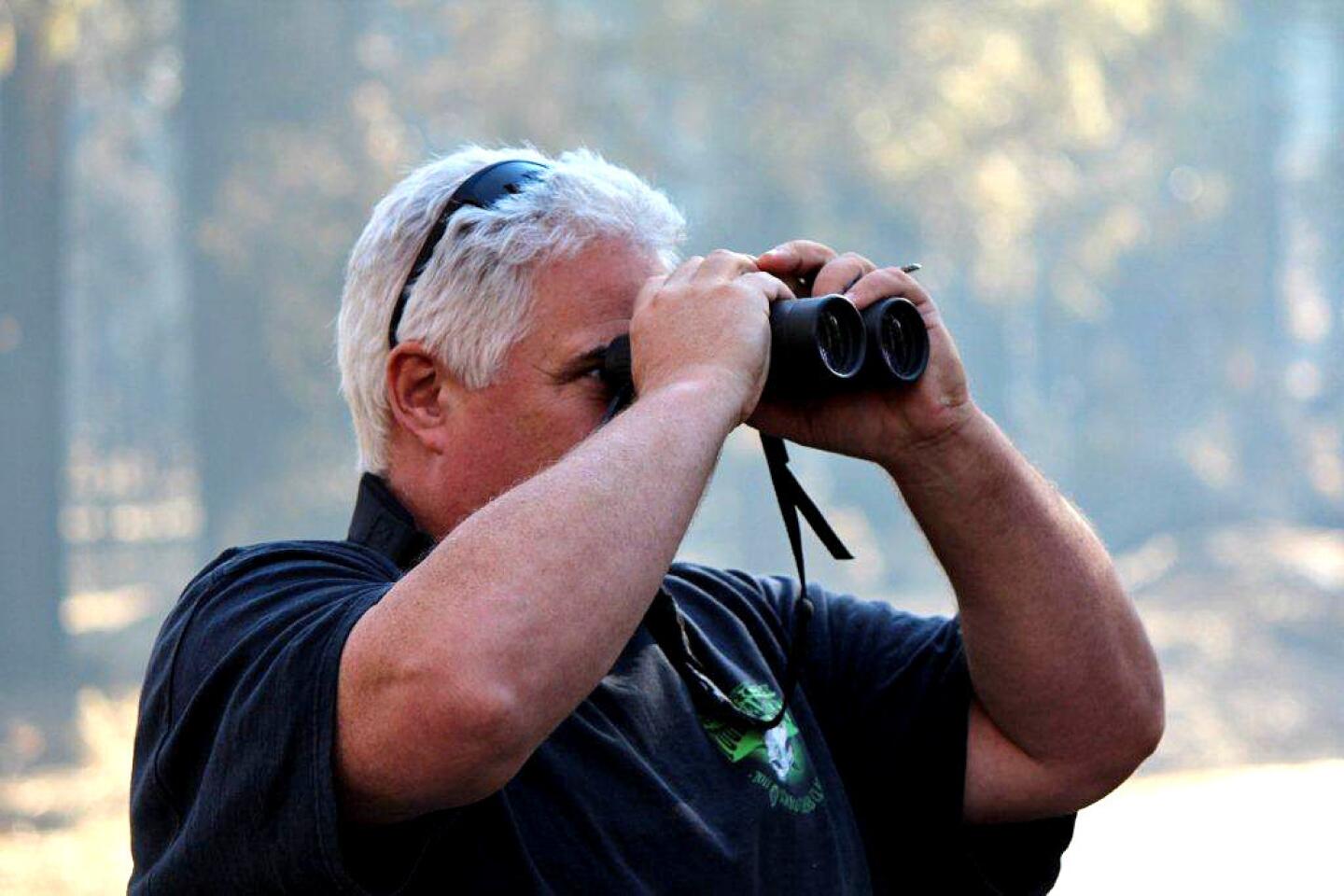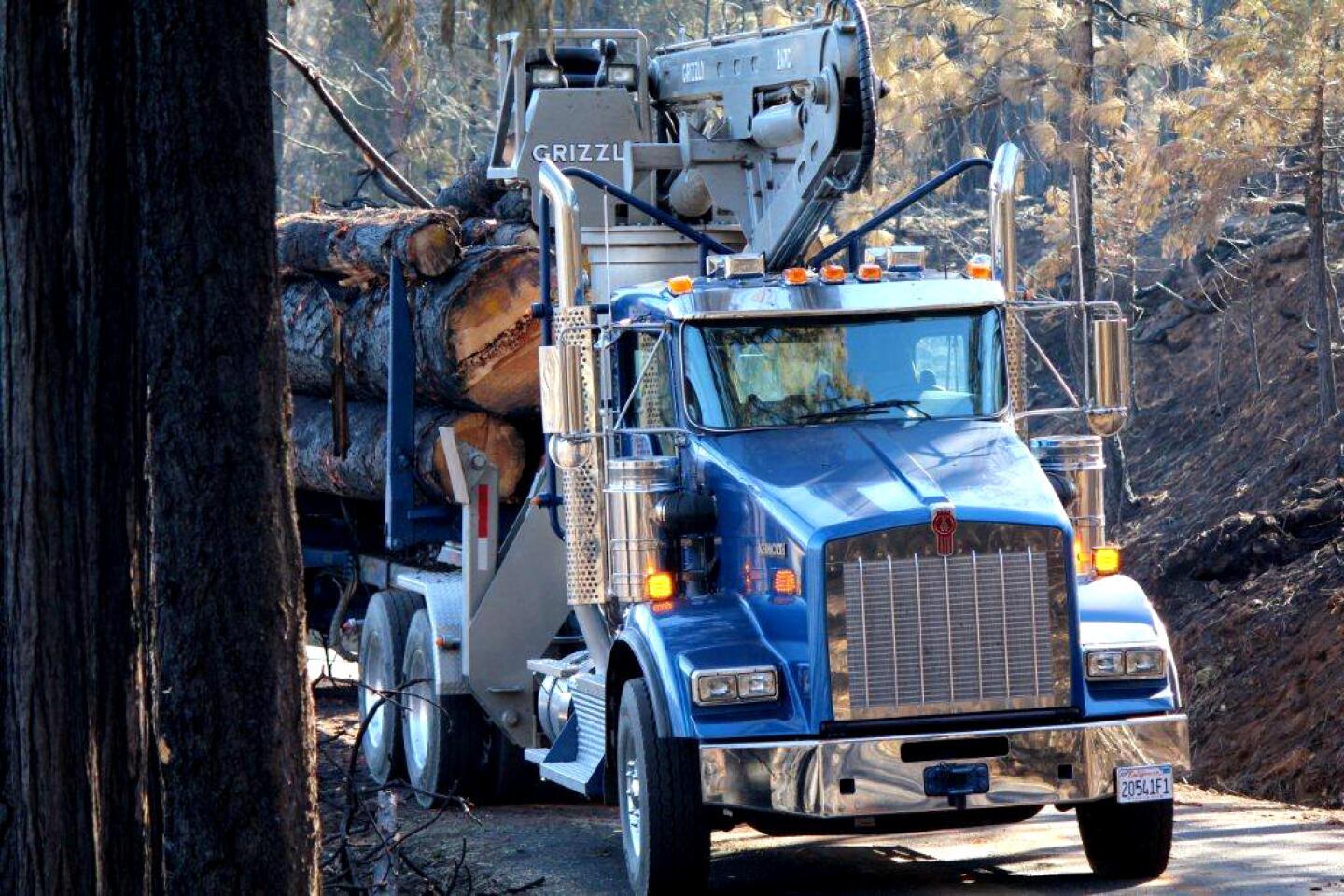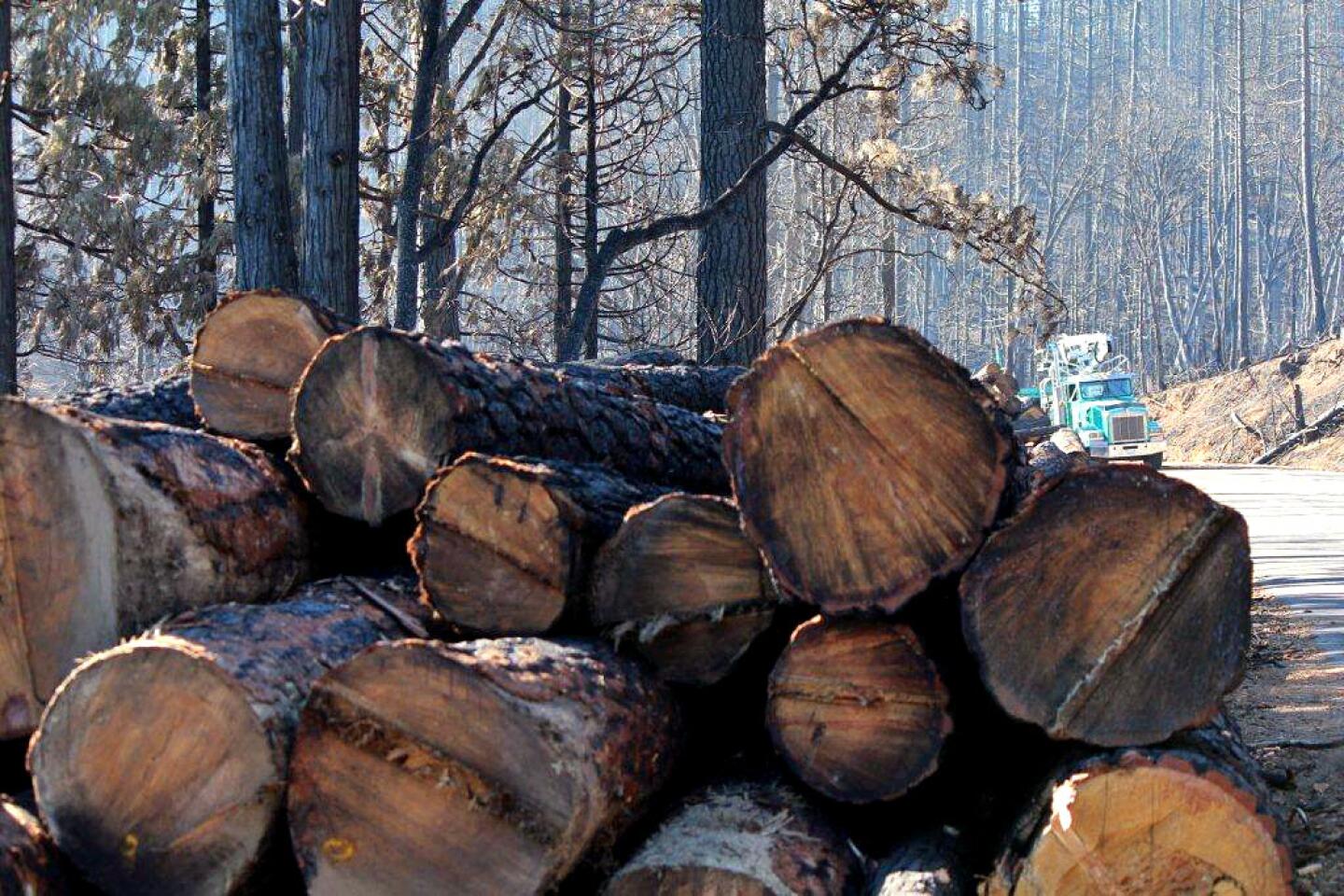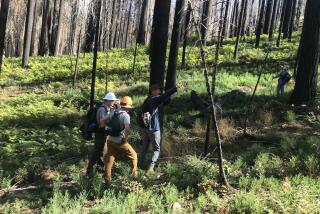In Rim fire’s aftermath, controversy over the recovery effort
BUCKHORN MEADOWS, Calif. — Calls for massive salvage logging, restoration and reforestation projects in the 257,000 acres of public wilderness scarred by the Rim fire have ignited controversy over how to proceed with the largest recovery effort undertaken in the Sierra Nevada.
“We’re hoping to negotiate our way through this, but we need the infrastructure and personnel,” said Jerry Snyder, a spokesman for the Stanislaus National Forest. “This effort will be huge, so we’ll also need additional help from Washington.”
But time is running out. The fire left behind about 1 billion board feet of salvageable timber, much of which could be rendered worthless by fungus and wood-boring beetles within a matter of months. At least 200 miles of roads are endangered by collapsing trees and fallen power poles. Existing culverts are no match for mudslides expected to choke Sierra streams after winter rains hit the fire-stripped slopes.
Then there is the federal government shutdown, which could hamper firefighters’ efforts to mop up hot spots smoldering since the fire — touched off in August by a hunter’s illegal campfire — burned across the Stanislaus National Forest, Yosemite National Park and private holdings.
Although no one disagrees with the need for safety in an area so badly damaged by fire that much of it will remain closed for a year or more, there are disagreements about everything else.
On one side are those — mostly federal land managers and timber industry advocates — who want to get large-scale salvage logging approved before snow starts to fall. Reforestation projects later in the year, they say, would also boost economic activity in a region with only 30% of the mills it had a decade ago.
“No doubt there’s more timber out there than can be absorbed by the mills,” said Mike Albrecht, president of the Calaveras County forest products firm Sierra Resource Management. “But I want to see that become the problem, not that we can’t get the wood to the rails.”
A week ago, Rep. Tom McClintock (R-Elk Grove) introduced a controversial measure that would expedite salvage logging in the national forest and Yosemite by suspending environmental reviews and forestalling litigation by environmentalists, which, he said in an interview, “run the clock out on recovery of fire-killed timber.”
But critics argue that such proposals — coupled with global warming, inadequate federal funding to manage replanted forests and unnaturally dense vegetation resulting from strict fire suppression policies — would only set the stage for more catastrophic blazes.
Beyond that, salvage logging operations and tree plantings do not always go as planned.
In 2011, Forest Service crews planted nearly a million pine and fir trees to try to reclaim land scorched clean by the devastating Station fire in Los Angeles County. Most died within months.
Funding for federal reforestation efforts typically includes proceeds from salvaged timber sales, such as those that followed the Stanislaus Complex fire in 1987. However, millions of pine trees planted over 145,000 acres damaged by that blaze 26 years ago were consumed by the Rim fire.
Logs salvaged from last year’s 1,150-acre Ramsey fire remain unsold, forest service officials said.
Justin Augustine, a spokesman for the Center for Biological Diversity, argues that high-severity fire is a natural component of healthy Sierra Nevada forests. Claims about excessive fire severity are often used to justify and hasten what he described as “unnecessary salvage logging operations.”
“Salvage logging for other than safety concerns is barbaric,” Augustine said.
Malcolm North, a scientist at the Forest Service’s Pacific Southwest Research Station in Davis, Calif., would not go that far.
“Post-fire salvage doesn’t help the environment because snags are important to wildlife and influence how the forest recovers,” North said. “But it’s a tough situation for the Forest Service, which has more houses embedded in the forests they manage. As a result, their approach to fire is containment, which can have negative consequences for the natural environment.”
Limited soil stabilization and salvage operations are already underway. The Forest Service is clearing slash and fire-weakened trees from alongside main roads and trails. Contract crews are removing dead trees from utility rights-of-way used by firefighters and employees of the city of San Francisco’s Hetch Hetchy water and power system. Sierra Pacific Industries, which operates two mills near the city of Sonora, is aggressively logging its 16,000 acres that burned in the fire.
Those efforts represent the potential Rim fire salvaging world in miniature.
On a recent weekday, Dennis Seastron waded through snags and ashes on his 126-acre holding in the community of Buckhorn Meadows, about 10 miles west of Yosemite, angrily taking stock of the devastation and his potential losses.
Clear sap oozing from charred trees signaled the arrival of wood-boring beetles that he compared with “starving hound dogs running to dinner plates.” Timber prices are low, fuel and transportation costs are high, and heavy equipment is hard to come by. Logs that would have fetched $950 each a decade ago are worth half that at best, he said.
On a hillside with sweeping views of the rugged expanses burned by California’s third-largest wildfire, Seastron shook his head and said, “Even if it were possible to access all those dead trees, there’s no infrastructure to process them.”
More to Read
Start your day right
Sign up for Essential California for news, features and recommendations from the L.A. Times and beyond in your inbox six days a week.
You may occasionally receive promotional content from the Los Angeles Times.
